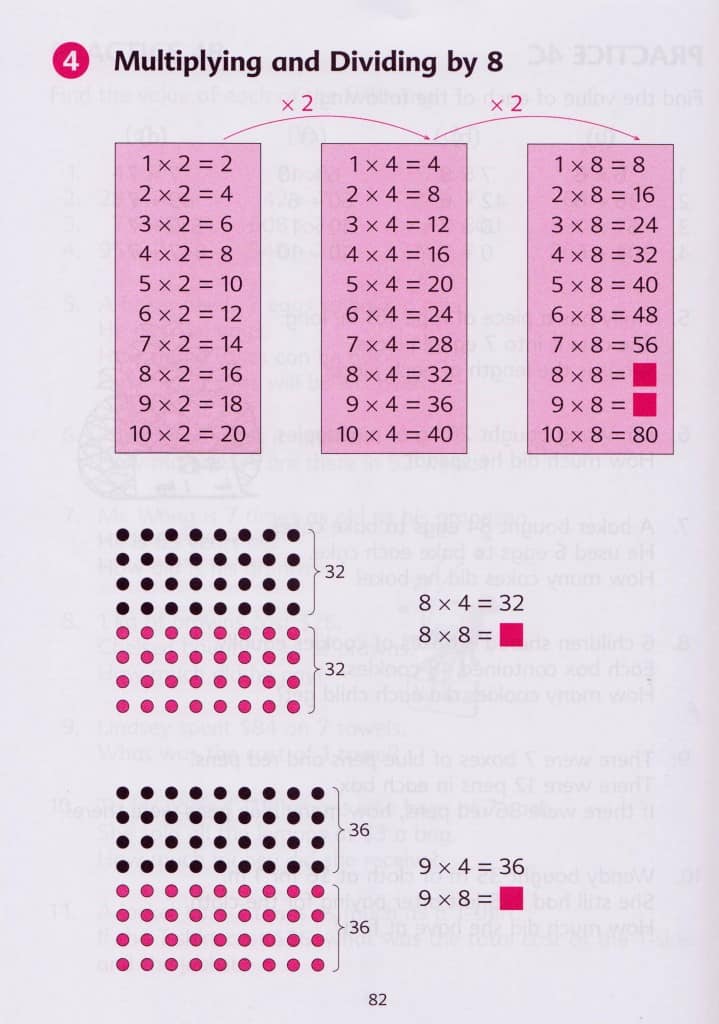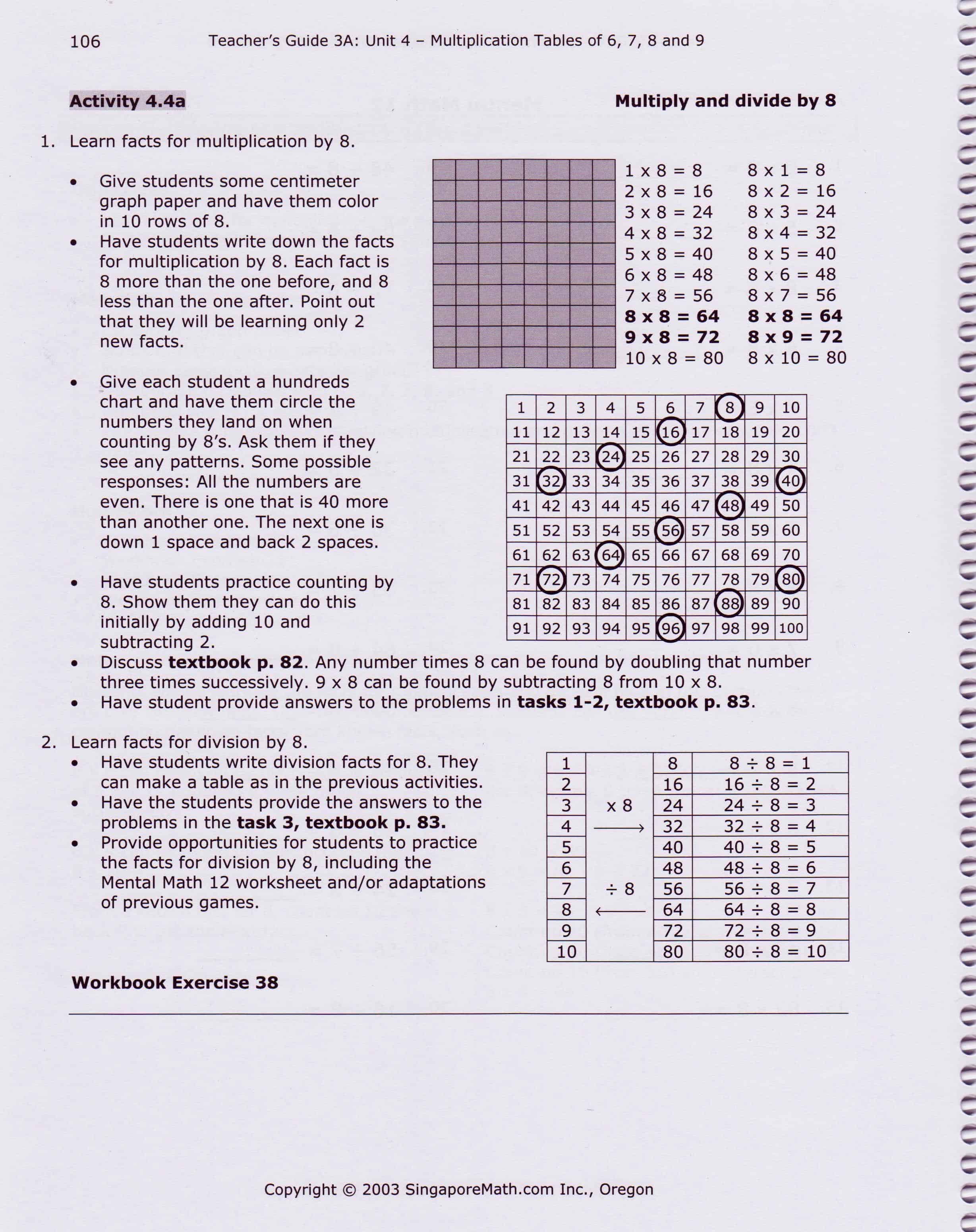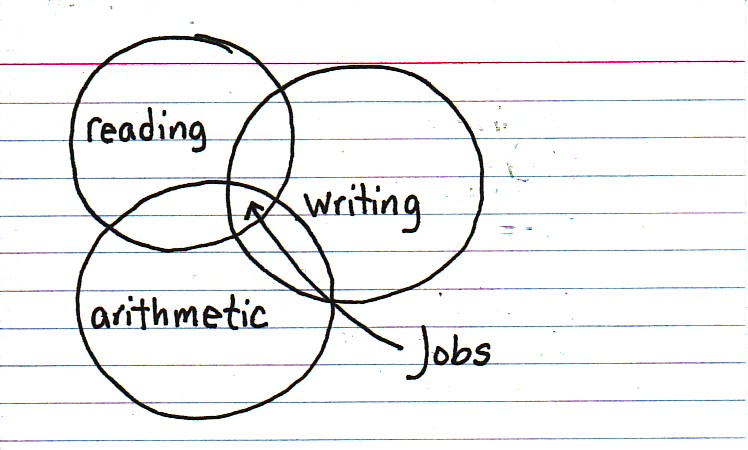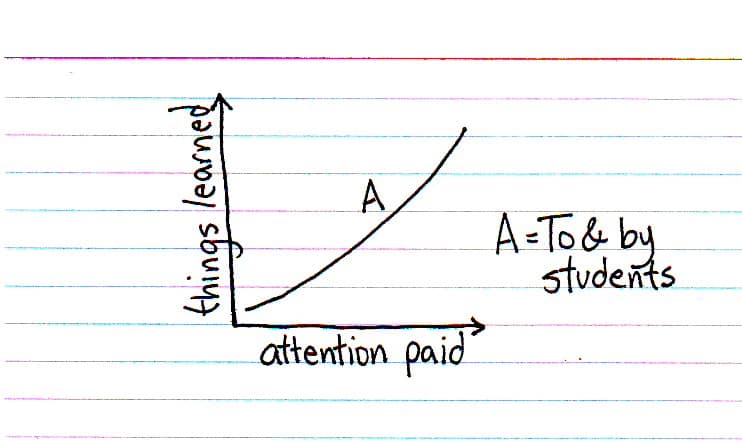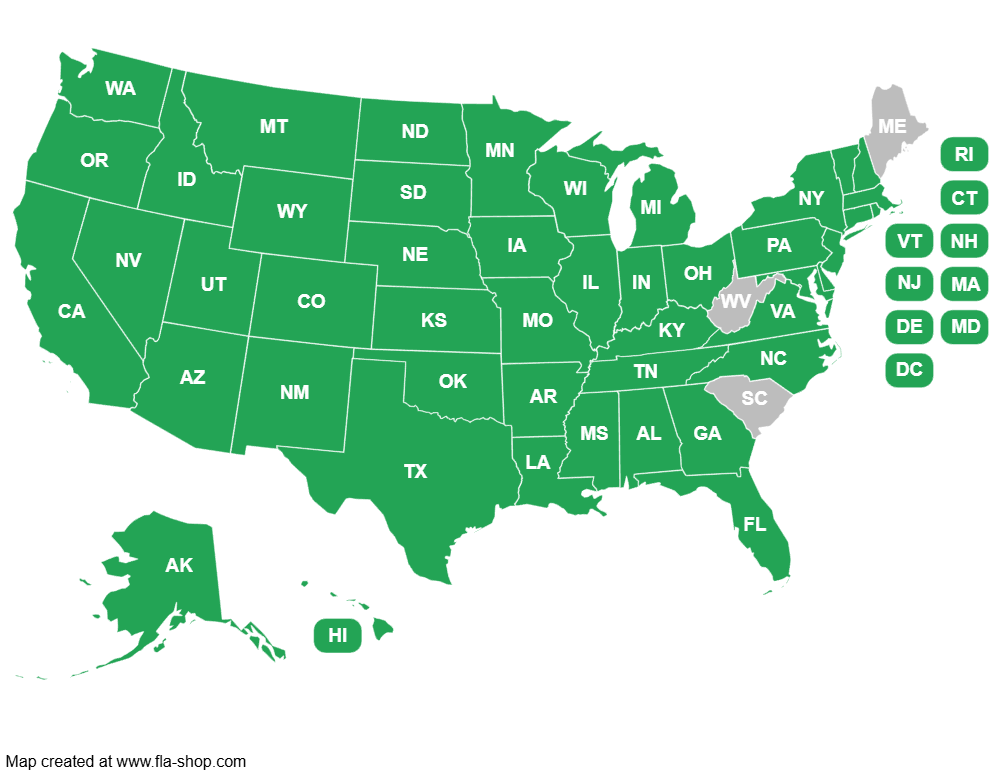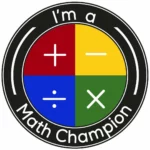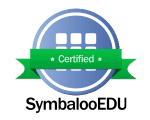Schools considering Singapore Math programs in their schools frequently ask me what the biggest challenges are when adopting the curriculum. Let me give you an example from a third grade classroom I visited recently.
The math period started with a mad math minute type of activity of either addition or subtraction, depending where the students were working. For the lessons on multiplication and division by 8’s and 9’s, the teacher chose to list the tables from 2 x 8 through 9 x 8 on the whiteboard and have the students copy them down, like this:
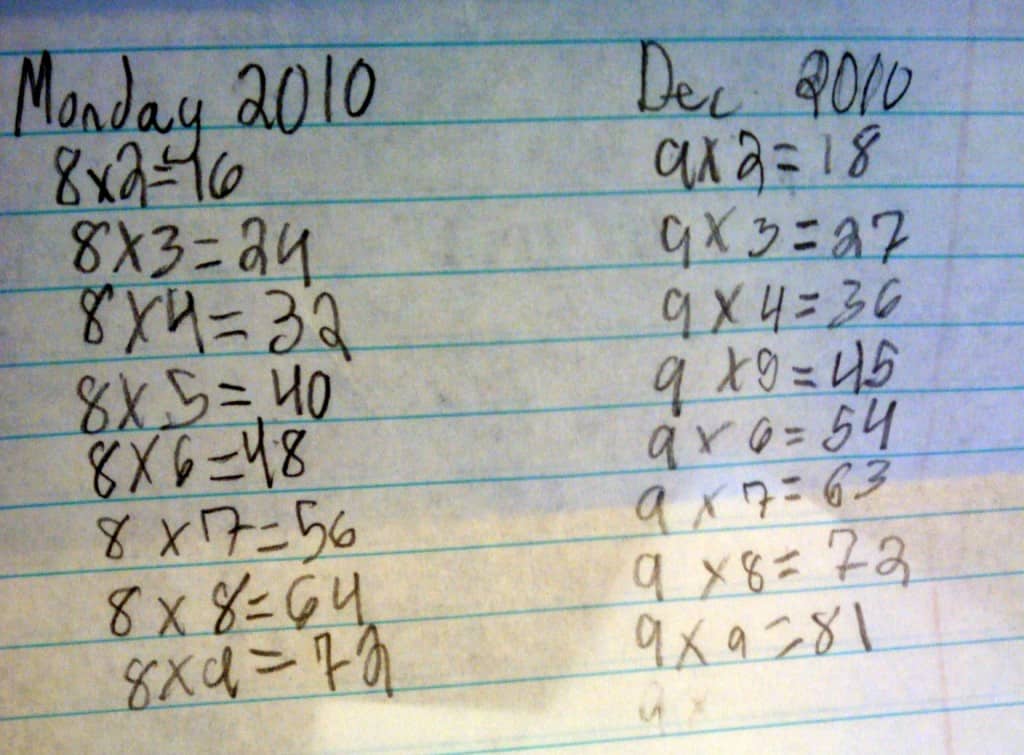
Next, the teacher had the students make flash cards and quiz each other. Finally, in a class of 27, they played around the world. The game where two students compete against each other to see who can get the answer to the problem on the flash card faster.
The lesson in the textbook does include some multiplication charts. The textbook was open on the teacher’s desk and she did refer to it at least once during the lesson:
Primary Mathematics 3A Textbook, U.S. Edition:
Notice how the textbook draws out a student’s prior knowledge to show the patterns behind the computation?
The 3A Teacher’s Guide includes a more comprehensive lesson based on a deeper understanding of the number 8 and it’s multiples. I couldn’t find it in the room.
(Click to enlarge)
Can you see the difference in the depth of a student’s understanding after the Primary Mathematics lesson?
Note that the subsequent three lessons are:
- Multiplying a 2 or 3 digit number by 8.
- Dividing a 2 or 3 digit number by 8.
- Word problems that require multiplying and dividing by 8.
The sequence of lessons follows the same pattern for the number 9.
When I asked the teacher about the lesson, she essentially said, “well, I didn’t think to look at the teacher’s guide. I’ve always taught this way.” She’s new to the school and only had about 2 hours of training.
Back to the original question. One of the biggest challenges for schools adopting the Singapore Math curriculum is the need for adequate training. If teachers don’t understand what makes Singapore different or if they lack content knowledge, they’ll continue to teach the way they always have. Effective training will give teachers an understanding of Singapore Math’s philosophy and approach and leave them with confidence in their ability to teach it.
Buying the curriculum is the first step. Successful schools invest in content-based training.
